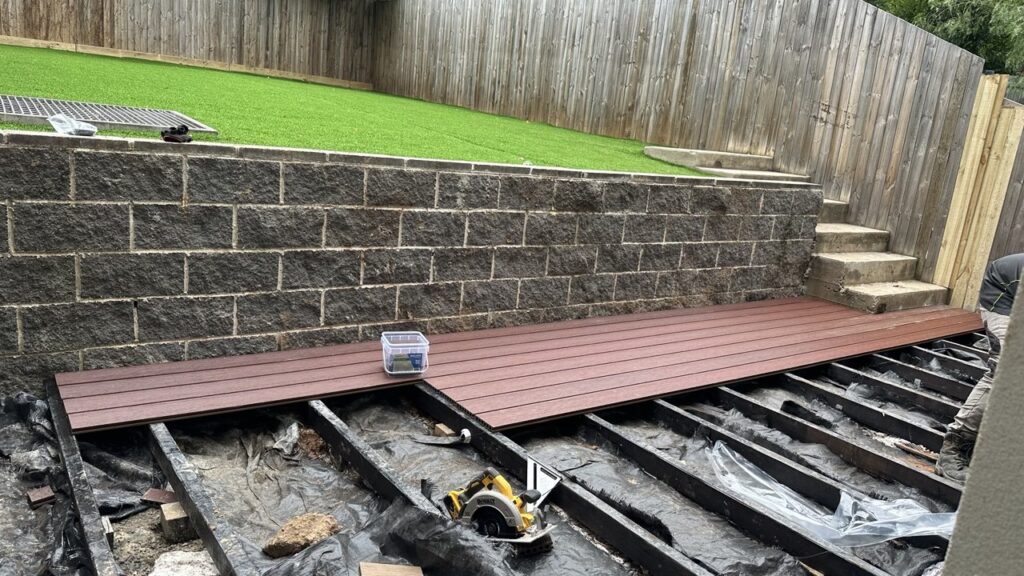Composite decking has become a top choice for Australians looking for durable, low-maintenance, and attractive outdoor living spaces. But when it comes to choosing composite deck slats, one of the biggest decisions is: hollow or solid boards? In this article we’ll break down their differences, benefits, concerns raised by users, and help you decide what’s right for your project.
What Are Hollow and Solid Composite Deck Slats?
Solid composite deck slats are boards made of a dense core—fully filled with the composite material (wood fibres + plastic or HDPE etc.), without internal cavities.
Hollow composite deck slats have voids or cavities running along their length, which reduces material usage and weight. The walls of the board provide strength.

Key Differences: Hollow vs Solid Composite Decking
| Feature | Solid Composite Deck Slats | Hollow Composite Deck Slats |
|---|---|---|
| Weight & Handling | Heavier. More material means heavier boards; can be harder to move, cut, fix. | Much lighter. Easier to handle, transport, install, especially for DIY or retrofits. Dowd Hardware+4NewTechWood+4Ultra Decking+4 |
| Strength, Durability & Load Capacity | More rigid and durable under heavy loads, high foot traffic, furniture. Less risk of sagging. Better resistance to impact. NewTechWood+3BuildDirect+3orlandi.com.au+3 | Less material means potentially less strength. Hollow boards may flex more, especially under concentrated loads. Needs correct support spacing. orlandi.com.au+3NewTechWood+3NeoTimber® Decking+3 |
| Cost | Typically more expensive per board, due to more material, manufacturing etc. BuildDirect+2Ultra Decking+2 | Usually cheaper upfront. Lower material use means savings. oakio.com+2Ecodek+2 |
| Installation & Structural Considerations | Solid boards may allow wider joist spacing; fewer concerns about collapse when screwing. Ends don’t need special caps. Ultra Decking+2NewTechWood+2 | Hollow boards require more careful joist spacing/support. Ends often require capping or fascia to hide hollow core. Screws may deform hollow core if not correctly installed. Risk of water/moisture intrusion into core if ends exposed. Ecodek+2Ultra Decking+2 |
| Moisture & Rot / Lifespan | Better resistance to moisture issues in core (because there is no void that can trap water). Less likely to suffer from internal decay. Usually longer warranties. Ecodek+2NeoTimber® Decking+2 | Hollow cores can trap moisture if water enters; may lead to rot issues, mould, or swelling. Lifespan may be shorter if not well maintained. Ecodek+2oakio.com+2 |
| Aesthetics & Finish | Solid boards give a more substantial feel; clean edges; no need for plugs / end caps; often better sound underfoot. Ultra Decking+1 | Hollow boards sometimes show hollow ends, require end caps or trims; may have slightly less “solid” underfoot feel. But can be made that look is acceptable. Ecodek |
| Weight Changes & Thermal Expansion | More mass can moderate temperature changes somewhat; still will expand/contract though. |
Benefits (Pros) of Each
Solid composite slats:
- Greater structural integrity; better for high-traffic areas, heavy furniture, or commercial use.
- End finish is cleaner; fewer problems with exposed hollow cores.
- Often longer warranties; less risk of moisture/fade/wear in core.
- Better feel underfoot, possibly quieter.
Hollow composite slats:
- Lighter, so easier to handle, transport, cut. Good for DIY or where weight load on structure is a concern (e.g. balconies).
- Lower cost per board up front.
- Still offers many of the composite decking’s benefits: low maintenance, resistance to rot, insect damage, less warping than untreated wood.
Common Concerns & What Users Ask
When homeowners in Australia research hollow vs solid composite decking, these are frequent concerns and questions. Here are what people ask, and answers based on what experts and suppliers say.
| Concern / Question | What People Worry About | Answer / What to Check |
|---|---|---|
| Will hollow boards sag or warp over time? | Because they’re less dense, less material; worry about bending under load. | Good quality hollow boards with proper joist spacing and strong support can perform well. Check span recommendations in the product specs. If expecting heavy loads (spa, furniture, lots of foot traffic) solid boards are safer. |
| What about exposure to moisture? | Hollow cores may accumulate moisture inside, especially if ends are exposed. Could lead to mould, rot or splitting. | Ensure ends are sealed or capped. Make sure installation has good drainage and ventilation. Choose brands with proven performance in wet/humid or coastal climates. |
| How does heat / sun affect each? | Sun may heat boards; dark colours may fade; thermal expansion could cause movement. | Solid composite boards with good capping / high UV resistance perform better for colour retention and durability. Hollow ones also subject to heat, but weight and sometimes material differences can make a difference. Use lighter colours or shades, and follow manufacturer’s expansion gap instructions. |
| Cost vs Lifespan trade-off | Low upfront cost attractive, but will hollow boards need replacing sooner, thus costing more over time? | Yes, sometimes. If hollow boards degrade faster or require more maintenance, the total cost of ownership may favor solid boards. Look at warranty periods and real-world reviews. |
| Installation difficulty / fixing | Hollow boards may be tricky to fasten without cracking; solid boards easier with screws, etc. | Use correct fixings, follow manufacturer guidance. For hollow boards, use appropriate fasteners, avoid over-tightening screws, ensure edges are supported. Also capping / end caps help protect hollow ends. |
